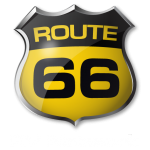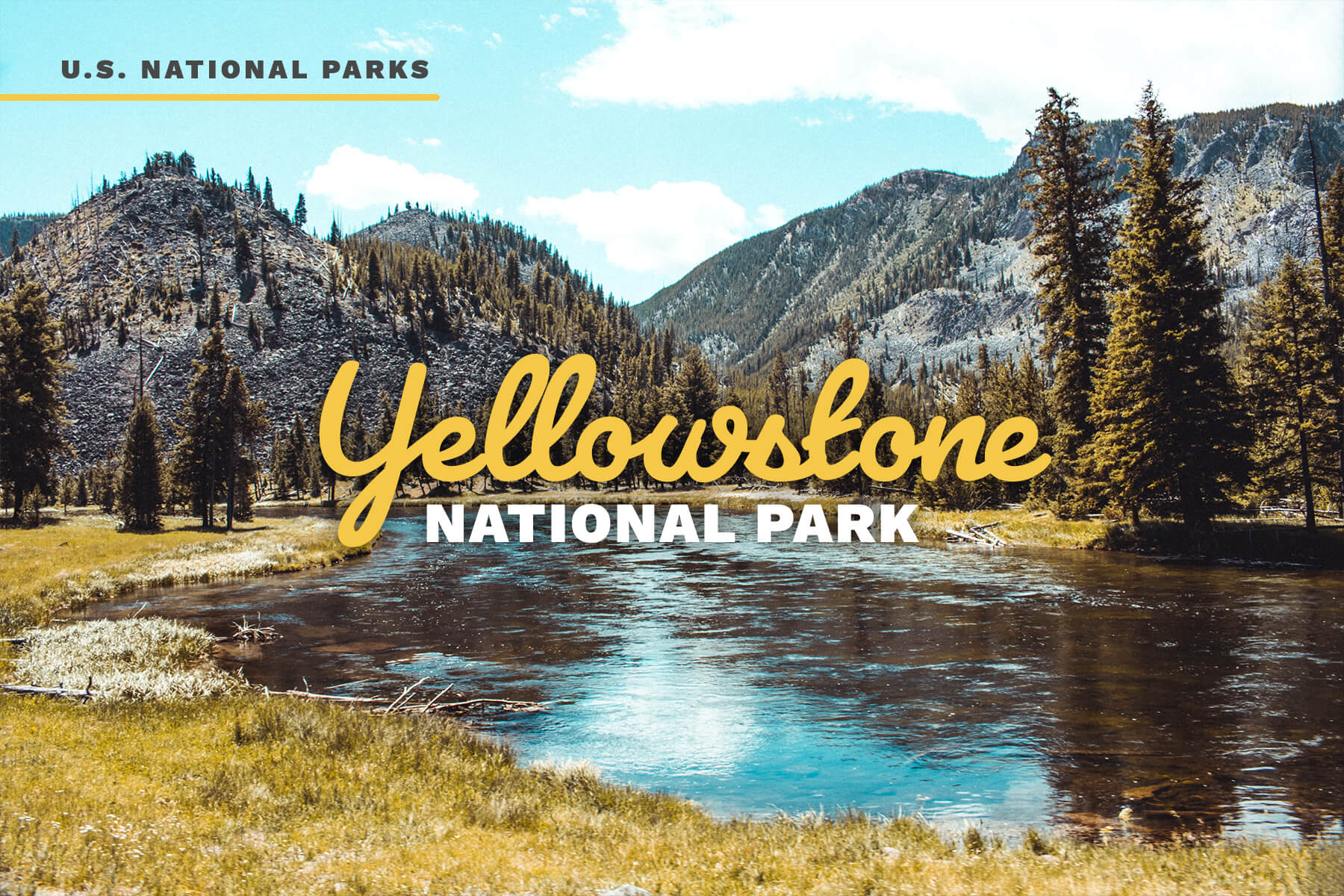The United States National Park system offers travelers several opportunities to explore unique landscapes, view beautiful scenery, and encounter a wide variety of wildlife. Yellowstone National Park in Wyoming, and parts of Montana and Idaho, is nearly 3,500 sq. miles of wilderness atop a volcanic hot spot and was the world’s first national park. When you choose to travel to this gorgeous park, you will find dramatic canyons, hot springs, lush forests and more including the famous geyser, Old Faithful. Yellowstone is home to several animal species including wolves, bison, elk, and bears. Yellowstone is perfect for all types of camping lifestyles including traditional tent camping and RV camping. Start planning your trip to Yellowstone National Park today – you don’t want to miss it!
Fast Facts
Yellowstone Entrance Passes:
- For non-commercial, private vehicles, a 7-day pass costs $35 per vehicle. Keep in mind that this does not include entrance to Grand Teton National Park which is also nearby. Visitors that are entering through Yellowstone’s South Entrance will be traveling through Grand Teton National Park first and will be required to pay entrance fees to both parks.
- Visitors can also purchase an annual park pass for $70 per vehicle or an ‘America the Beautiful – Annual Pass’ for $80 which is honored at all federally-managed land units such as national parks, national forests, national monuments, and more. For more information on entrance fees, reference the National Park Service.
Best Time to Visit:
- Summer is a fantastic time to take a trip to visit Yellowstone National Park thanks to the warm weather and all park amenities being open. However, this is the most crowded travel time of the year for the park. If you are looking to avoid crowds, a good time to visit is September or early October.
How Many Days To Plan For:
- Plan to spend at least 2 to 3 days in Yellowstone National Park to be able to hit some of the most desired locations. Two days in the park gives you plenty of time to see the most popular attractions such as Old Faithful. Adding an additional day gives you time to explore and view some of the less visited attractions. Check out this Yellowstone National Park Travel Guide for an itinerary to make the most of your time.
Where to Stay:
- Yellowstone National Park has 12 campgrounds and an RV park that are perfect for those who like being right in the middle of the beautiful outdoors. If you aren’t planning to camp or take your recreational vehicle, the Old Faithful Inn and Canyon Lodge & Cabins are two of the best places to stay and are both close to the most popular places in the park. If you are wanting to stay outside the park, we would suggest hotels in West Yellowstone, Montana.
Pet Policy:
- Unfortunately, pets are not allowed on any of the hiking trails within Yellowstone National Park and cannot be left unattended. To learn more about Yellowstone’s pet policy, reference the National Park Service.
Park History
The Yellowstone region has been called home for more than 11,000 years by several tribes and bands. These groups of people used the park as their hunting ground, transportation route and home prior to and even after the arrival of the European American settlers. In 1872, Yellowstone was established as the world’s first national park. The railroad arrived at the park in 1883 which allowed visitors to more easily access the park’s beautiful landscape. In 1915, automobiles were first allowed into the park so that visits were more economical for travelers. The US Army managed Yellowstone until 1916 at which point the National Park Service was established. Today, Yellowstone National Park is protected and preserved by a number of management divisions and departments so that generations for years to come are able to enjoy these natural wonders and learn more about the history of the land.
Top Park Features
- Yellowstone is a supervolcano! Did you know that one of the world’s largest active volcanoes lies just beneath Yellowstone National Park? The first major eruption took place over 2 million years ago and covered over 5m000 sq. miles with ash. While this volcano is still considered active, there has been no active lava flow in over 70,000 years.
- Old Faithful erupts more frequently than many other large geysers. This geyser got its name in 1870 from its regularity of eruption, although never at exact hourly intervals. Yellowstone has more geysers than anywhere else on Earth, and Old Faithful typically erupts around 17 times a day.
- Half the world’s hydrothermal features can be found at Yellowstone. This national park preserves over 10,000 hydrothermal features which include hot springs, mud pots, geysers, and travertine terraces. These features get their brilliant colors from microorganisms called thermophiles, which are heat-loving organisms.
- The wildlife causes several traffic jams. Yellowstone has much more to offer than just geysers, it is also known for its bison herds. This park is the only place where bison have lived since prehistoric times and they often cause traffic jams (also known as bison jams), as cars wait for them to cross the road.
- Yellowstone is home to the largest concentration of animals in the lower 48 states. The wildlife at Yellowstone National Park is abundant and diverse with an estimated 67 species of mammals, 300 species of birds, and 16 different types of fish. Some of the mammals that call Yellowstone home include grizzly bears, lynx, foxes, elk, wolves and moose. Although beautiful, please remember to not approach them. The park rules state that you must be at least 25 yards from large animals and at least 100 years from wolves and bears.
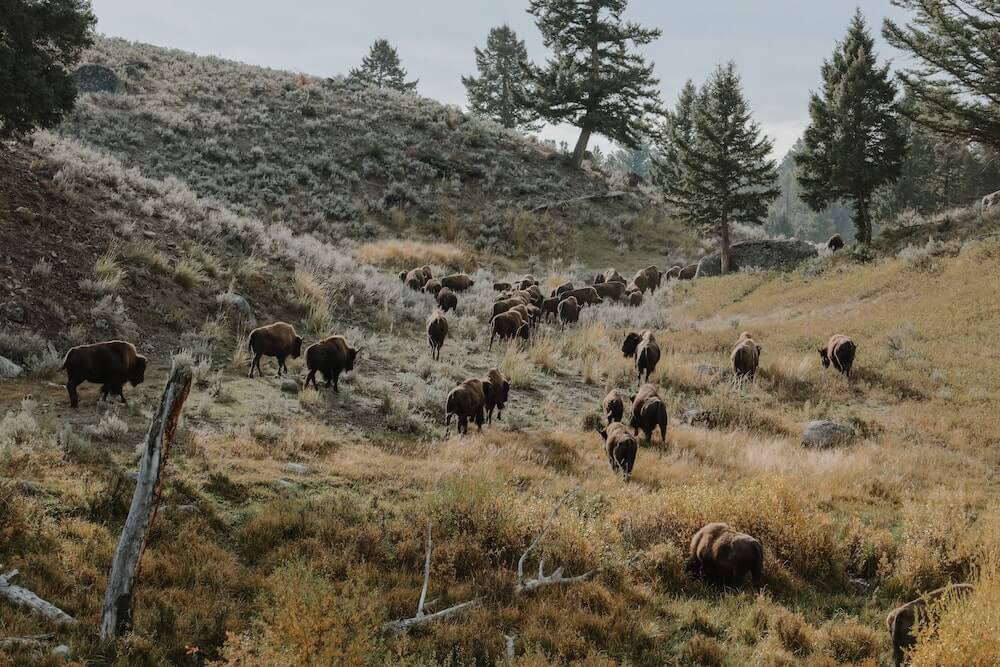
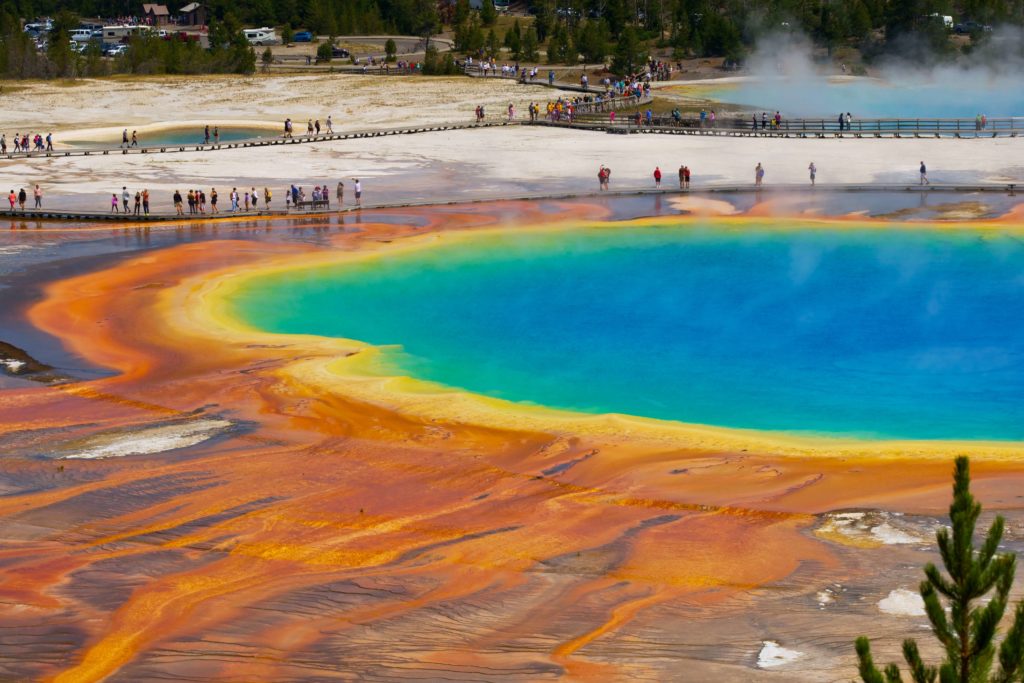
Things To Do
Hot Springs
Yellowstone’s beautiful hydrothermal areas are home to several features such as pots of bubbling mud, geysers, and hot springs. Fun fact: Hot springs are the most common hydrothermal features in this national park. Each temperature in the hot springs has its very own set of microorganisms, which provide a different color. This is the reason why the hot springs have those amazing bands of color that expand from the center.
Top hot springs to visit at Yellowstone National Park:
- Crested Pool (Upper Geyser Basin)
- Sapphire Pool (Biscuit Basin, part of Upper Geyser Basin)
- Turquoise Pool (Midway Geyser Basin)
- Fountain Paint Pot (Lower Geyser Basin)
- Blue Funnel Spring (West Thumb Geyser Basin)
Hiking Trails
From beautiful waterfalls and deeply carved canyons, one of the best ways to see the true beauty that lies within Yellowstone National Park is to hop on the trails and take a hike. When preparing for your hike, be sure to dress in layers since the temperatures can fluctuate drastically from day to night. It is smart to wear moisture-wicking hiking shirts and warm fleece layers to stay comfortable all day long. It is crucial to carry safety gear and plenty of water. Yellowstone is bear country so don’t forget the bear spray!
Best hikes in Yellowstone National Park:
- Wraith Falls (1 mile)
- Fairy Falls (4.8 miles)
- Grand Prismatic Overlook Trail (1.5 miles)
- Upper Geyser Basin and Old Faithful Observation Point Loop (4.9 miles)
- Lone Star Geyser Trail (5.3 miles)
- North Rim Trail (6.4 miles)
- Trout Lake Loop (1.2 miles)
Geysers
One of the most famous attractions in Yellowstone National Park is its magnificent geyser basins. These hydrothermal features are the reason that the U.S. Congress established Yellowstone as the world’s first national park. Visitors will find the world’s tallest geyser, Steamboat Geyser, and the previously discussed, Old Faithful. These geysers and hundreds of others are accessible and visible from various trails and boardwalks.
Most notable geyser basins in Yellowstone:
- Norris Geyser Basin: Crackling Lake, Porcelain Springs, Emerald Spring, Cistern Spring, Echinus Geyser, and Steamboat Geyser
- Upper Geyser Basin: Old Faithful, Castle Geyser, Riverside Geyser, Grand Geyser, Castle Geyser, Crested Pool, Morning Glory Pool, Sapphire Pool, Emerald Pool, Beauty Pool, and Punch Bowl Spring
- Lower Geyser Basin: Fountain Paint Pot, Great Fountain Geyser, and White Dome Geyser
- Midway Geyser Basin: Excelsior Geyser Crater, Turquoise Pool, and Grand Prismatic Spring
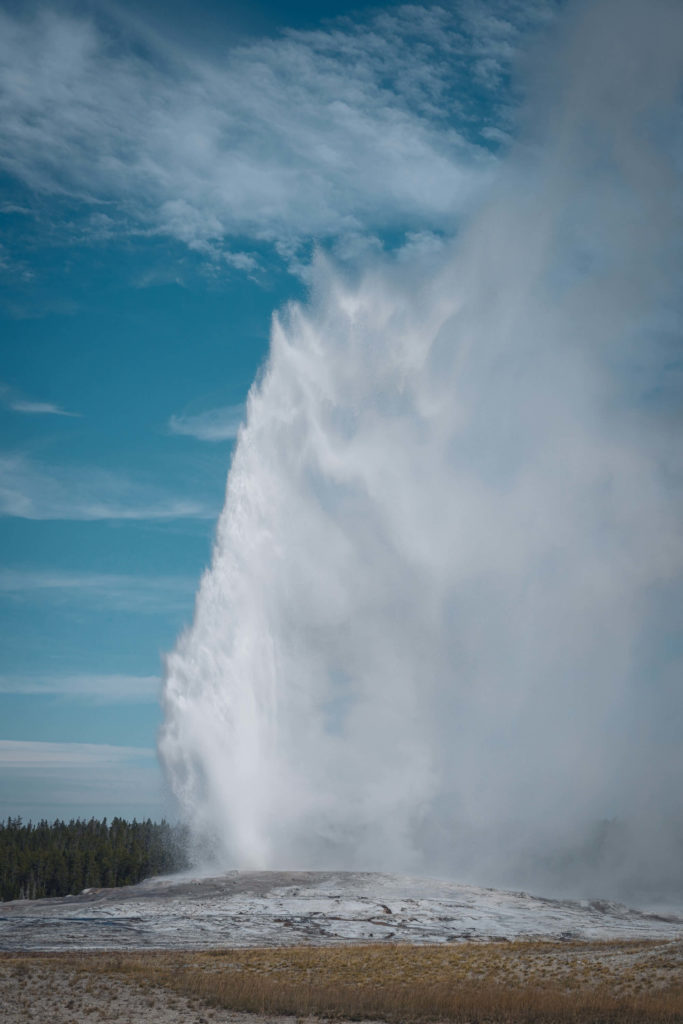
Lakes & Waterfalls
Yellowstone National Park has over 150 named lakes. The most famous being Yellowstone Lake which is more than 7,000 feet above sea level (making it North America’s largest high-elevation lake), spans 139 square miles, and features 141 miles of shoreline. Lakes in Yellowstone are home to a variety of wildlife including native fish species and an immense bird population. Be on the lookout for eagles and trumpeter swans!
Visitors can also look forward to hundreds of waterfalls, several of which are visible from roadside viewpoints and overlooks otherwise known as “frontcountry”. Lower Falls of the Yellowstone River drops down 308 feet into the Grand Canyon of Yellowstone. We also suggest you check out Gibbon Falls, Kepler Cascades, Rustic Falls, and Undine Falls.
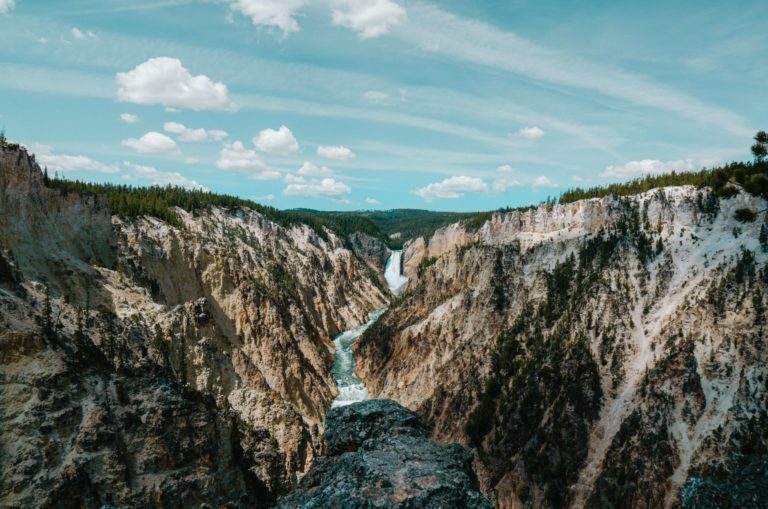
Campgrounds
Yellowstone National Park has 12 campgrounds with over 2,000 established campsites for its visitors. All campsites must be reserved in advance, except for Mammoth Campground which has first come, first served sites from mid-October to the beginning of April. Reservations book up fast so be sure to mark your campsite reservations early in advance. Fishing Bridge RV Park (no tents) is the only campground that offers water, sewer, and electrical hookups. Keep in mind that dump stations may close when the temperatures reach below freezing.
